

The VA Disability Advocate

HOW TO WRITE A COMPELLING STATEMENT TO SUPPORT YOUR CLAIM
Crafting a compelling Statement in Support of Claim for your VA disability application involves detailed storytelling and clear articulation of how your service-related disability impacts your life. A well-structured statement can significantly enhance your claim by providing the VA with a vivid, personal insight into your experiences, challenges, and needs. Below, we expand on each section of your statement to ensure a comprehensive and persuasive narrative.
Start with a detailed introduction of your military service. This should include:
Branch of Service and Unit: Clearly state your branch and unit, providing a foundation for understanding your military background.
Service Duration and Locations: Mention the total years served and key locations, especially those relevant to your claim.
Roles and Responsibilities: Describe your MOS or specific duties, focusing on aspects that relate directly to your disability claim.
Detailed Account of the Event: If a specific event is at the heart of your disability:
Event Description: Provide a chronological narrative of the event, including the date, location, and what transpired. Use descriptive language to convey the intensity or seriousness of the situation.
Your Role in the Event: Detail your involvement, actions taken, and any immediate consequences you faced.
Eyewitness Accounts: If available, include statements from others who witnessed the event. This will add credibility and perspective to your account.
Description of Your Disability and Its Impact: This section is crucial for illustrating the breadth of your disability's impact on your life:
Physical and Emotional Toll: Discuss specific physical limitations or symptoms you experience. Describe the emotional and psychological effects, such as PTSD, anxiety, or depression, emphasizing how these have altered your daily life.
Professional and Social Impact: Detail any changes in your job performance, career trajectory, or employment status. Discuss the strain or changes in relationships and social activities, highlighting any isolation or withdrawal you've experienced.
Comparison of Pre- and Post-Service Life: Offer a vivid comparison of your abilities, hobbies, and quality of life before and after your service. This contrast can powerfully illustrate the disability's impact.
Medical Treatment and Response:
Treatment Timeline: Provide a detailed timeline of your medical treatments, including dates, healthcare providers, and treatment outcomes. This demonstrates the ongoing nature of your disability and your efforts to address it.
Accessibility and Efficacy of Treatments: Discuss any challenges in accessing care or limitations in treatment efficacy. This can highlight the complexity and severity of your condition.
Personal Testimony:
Personal Reflections: Share your personal journey in adapting to life with your disability. This might include mental health struggles, the challenge of redefining your identity post-service, or the daily realities of living with a chronic condition.
Hopes and Frustrations: Articulate your hopes for improvement or fears about the future. This section adds depth to your narrative, showing the human element behind the claim.
Supporting Testimonies
Family and Friends Observations: Incorporate statements from those close to you, detailing their observations of your struggles and changes since your service. These perspectives can underscore the broad impact of your disability.
Professional Insights: If applicable, include observations from your employers or colleagues about changes in your work performance or behavior, lending further evidence to your claim's validity.
Conclusion and Appeal for Support
Summary of Your Situation : Concisely summarize the key points of your narrative, reinforcing the severity and legitimacy of your disability.
Appeal for Understanding and Support: End with a respectful appeal to the VA for support, emphasizing the critical role of the benefits in maintaining your dignity, independence, and quality of life.
Writing Tips for Clarity and Impact
Narrative Flow: Ensure your statement has a logical flow, with each section smoothly transitioning into the next. This helps maintain the reader's engagement and understanding.
Emotive Language: Where appropriate, use emotive language to convey the intensity of your experiences and the depth of your struggles. This can make your statement more compelling and memorable.
Proofreading: Thoroughly proofread your statement or have someone else review it for errors and clarity. A polished, error-free statement reflects the seriousness of your claim well.
By meticulously crafting each section of your Statement in Support of Claim, you significantly strengthen your VA disability claim, ensuring that the VA fully comprehends the profound impact of your service-related disability on your life.

(Current Clients): Please use these forms to submit your statement
VA Form 21-0781 PTSD Statement - Personal Statement (Read This First)
VA Form 21-0781a PTSD and MST Secondary to Personal Assault - Personal Statement (Read This First)
VA Form 21-10210 Lay Witness Statement - Buddy, Family, and Friends Statements
VA Form 21-4138 General Statements - Can be used for any VA benefit
SAMPLE LETTER :
[Your Name]
[Your Service Number/SSN]
[Your Address]
[Email Address]
[Phone Number]
Department of Veterans Affairs
Claims Intake Center
PO Box 4444 Janesville, WI 53547-4444
Subject: Service Connection for Lumbar Strain
Dear Sir/Madam,
I am writing to apply for service-connected compensation for a lumbar strain that initially occurred in 1989 while I was stationed at Fort Polk, Louisiana. During a field exercise, I was involved in lifting a generator off a truck, which resulted in immediate back pain. I sought medical attention at the base's sick call, where I was prescribed 800mg of Ibuprofen and placed on a temporary profile.
Despite the initial care, I continued to experience lumbar pain throughout my service. However, fearing stigma and potential negative attention from my unit, I refrained from seeking further medical assistance. This decision, driven by a concern for my career and unit cohesion, has had lasting repercussions on my health.
After my service, my access to medical care was severely limited, and it wasn't until 2012, through my employment, that I was able to seek treatment for my ongoing back pain. Over the past three years, I have been under the care of a private chiropractor. Recent X-rays have confirmed the presence of Degenerative Disc Disease (DDD) and bulging discs, conditions that trace directly back to the injury I sustained while in service.
The impact of this injury has extended far beyond my service and into my personal and professional life. I am currently enrolled in a pain management program to manage the constant discomfort and limitation of mobility. My ability to perform at work has been compromised, leading to periods of unemployment and financial strain. Furthermore, the pain and subsequent treatment have caused me to miss significant life events and opportunities to spend time with my family, contributing to a decreased quality of life.
I have attached all relevant medical records, including the documentation from my initial visit to sick call in 1989, records from my chiropractic care, and the recent X-rays and diagnoses. These documents substantiate the origin of my lumbar strain during military service and its progression to my current condition.
I request that the Department of Veterans Affairs recognize the service connection of my lumbar strain and its subsequent conditions. Granting this claim would not only validate the physical suffering I have endured since my service but also provide the necessary support to manage my health moving forward.
Thank you for considering my claim. I am ready to provide any additional information or documentation required. I look forward to your response and hope for a favorable review of my case.
Conclusion:
When filing a VA disability claim, providing comprehensive evidence to support your case is vital. Statements in Support of Claim offer a valuable opportunity to strengthen your claim by providing crucial details, additional information, and personal testimonies. These statements substantiate the event that caused your disability, offer insights into its impact on your life, establish pre-service and post-service comparisons, and personalize your claim. Gathering and including these statements significantly enhances your chances of obtaining the disability compensation you deserve. The collective power of these statements adds depth, context, and humanity to your claim, ensuring that decision-makers have a comprehensive understanding of your unique circumstances.
The VA Disability Advocates Main Office is Located in Las Vegas, NV. We Represent Veterans throughout the United States. 702-992-4883
- Skip to primary navigation
- Skip to main content
- Skip to primary sidebar
- Skip to footer
Call Us Now 1-888-477-2363
Attorney Tips for Crafting Winning VA Statements in Support of Your Claim
Amy Mallette, Claims Advocate Updated: February 22, 2024

Filing for VA disability compensation can be a long and arduous journey for veterans, and may often end in denied claims and having to file for appeal .
One critical step in the claims process that veterans often underestimate the importance of is VA Form 21-120210 . Statement in Support of a Claim.
This piece of vital information can provide the VA with valuable insights to a veterans situation.
They are often personal narratives that other evidence and supportive documentation alone cannot replicate, because they allow for greater understanding of the impact of a veteran’s disability on his/her life.
The importance of this information cannot be understated and is why we created an attorney-approved guide on crafting compelling statements to strengthen your VA disability claim.
Why Do Statements Matter So Much?
There are a variety of reasons why VA Statements in Support of Your Claim can be beneficial to your case.
We mentioned some at the beginning of this article, but it’s important to understand many of the reasons why.
Here’s a few more to consider:
- Fills in the Details: Service records may note an incident but lack the depth of your experience. Your statement allows you to vividly depict the event, its effects on you, and the immediate aftermath, offering a personal perspective that other documents can’t.
- Shows the Impact: Explain how your disability impacts your life beyond just medical symptoms. Discuss day-to-day life, changes in your routines, challenges in physical and mental wellbeing, how it impacts your social relationships, etc. It’s important to really emphasize to the VA how your life has been affected.
- Pre and Post-Service Comparison: Highlight the difference between your condition before and after service. Accounts from those who knew you before can help establish this type of contrast, showing how the service-related event changed your life.
- Personal Touch: Your story, told in your own words, adds a human element to your claim. Share your journey, your struggles and your resilience. Personal narratives can make your case more relatable and understandable to those reviewing it.
Attorney Tips for Crafting Your Statement
Crafting a Statement in Support of a Claim is a lot more than just filling out a form.
It’s an opportunity for a veteran to tell their story, to share the realities of how your disability impacts your day-to-day life.
It can be a critical component to your claim.
In this section, we offer a handful of helpful tips from our team, designed to help you make the best use of this powerful tool.
Be clear and concise.
Start with a clear purpose for your statement. Are you discussing one specific claim or multiple? Focus on making your statement clear and to the point.
Example : “I am submitting this statement to support my claim for service connection for a knee injury sustained during combat operations in Afghanistan in March 2015. This injury has significantly reduced my mobility and continues to affect my daily life.”
Include critical information.
Whether it’s for the purposes of service-connection or an increased rating , tailor your statement to address the claim you’re filing. Describe events, symptoms and impacts with as much detail as possible, but avoid unnecessary information.
Example: “During a patrol in Kandahar, Afghanistan, on March 22, 2015, I was injured when our vehicle was struck by an IED. The blast resulted in severe trauma to my right knee, necessitating multiple surgeries. Despite medical interventions, I experience chronic pain and instability that impacts my ability to work and engage in physical activities with my children.”
Use specific examples.
Concrete, specific examples of how your disability impacts your life can be powerful. Mention dates, locations and any changes to your personal or professional life.
Example: “Since my knee injury in March 2015, I have faced daily challenges. For instance, on April 10, 2021, I was unable to climb the stairs at my son’s school for his award ceremony, a moment I missed and cannot get back. This is one of many instances where my injury has limited my participation in family and social events.”
Add testimonials.
Statements from your family, friends and fellow service-members can reinforce your claim. These testimonials can provide additional perspectives on your condition and its effects.
Example: Testimonial from Spouse: “Since my partner returned from service with a knee injury, I’ve seen a drastic change in their ability to engage in everyday activities. Simple tasks like grocery shopping or playing with our kids in the yard are now difficult and often painful for them.”
Want to learn more about what it takes to get winning lay statements from family, friends and service-members?

Click here to read about Lay Statements!
Review and Revise.
Before submitting, review your statement for clarity and completeness. Consider having someone else read it to ensure it’s understandable and covers all the necessary points.
Example before review: “I got hurt in service, and it’s bad. I can’t do things like before, and it’s hard on my family.”
Example after review: “I sustained a significant injury during my service, which has profoundly impacted my quality of life. Activities I once took for granted, such as walking without pain and participating in family outings, have become challenging, deeply affecting my family’s well-being.”
Statements in Support of a Claim are an invaluable piece of the VA disability claims process.
They allow a veteran to share their experiences, detail the impacts of their disability on their life and provide a personal touch that other evidence and paperwork just won’t have.
Spend quality time ensuring you have the best statement you can give the VA before you submit your claim.
Remember, your voice matters substantially in this process, and a well-crafted statement can potentially make a significant difference.

Were You Denied Benefits? Your Time is as Important as Your Claim
Your moments are precious. Don’t waste them on legal complexities trying to fight an appeal. Get your free case evaluation with us today.
Content Review
Cassandra Crosby, an Accredited Agent and claims advocate for Matthew Hill & Shelly Mark’s teams, reviewed the information provided in this post.
How useful was this post?
Click on a star to rate it!
As you found this post useful...
Share with others on social media!
We are sorry that this post was not as useful for you!
Help us improve this post!
Tell us how we can improve this post?
You Might Also Like

When putting together a statement in support of your claimed condition, are you looking to tell the story about your injury for the first time and seeking to get service…

When it comes to filing a successful disability claim through the United States Department of Veterans Affairs (VA), presenting enough evidence is vital. The right types of evidence establish that…

Statements: What You Need to Know and Why They are Important Strong evidence to help support a VA disability claim is very important. Whether it is medical records, service records…
Amy Mallette, Claims Advocate
Helping veterans nationwide. you don’t have to do this alone..

Our firm was founded in 1986 in Orlando, Florida. Since that time, we have provided compassionate yet assertive representation for our clients.
While we still have our home base in Florida, we represent clients nationwide. Learn more about us
Free Case Evaluation
Click to complete our:
Veterans Disability Claim Contact Us Camp Lejeune Lawsuit
OR CALL 1-888-477-2363

Office Locations
Please call for an appointment before visiting:
Mail Processing Center: P.O. Box 449, Deland, FL 32721
Orlando, FL: 605 E. Robinson Street Suite 635, Orlando, FL 32801 Deland, FL: 1607 South State Road 15A Suite 12 Deland, FL 32720
Satellite Offices Washington, D.C.: 1776 I Street, NW, 9th Floor, Washington, D.C 20006 Houston, TX: 2925 Richmond Ave, 12th Floor, Houston, TX 77098 Los Angeles, CA: 10880 Wilshire Blvd., Ste 1101, Los Angeles, CA 90025 San Jose, CA: 2880 Zanker Road, Ste. 203, San Jose, CA 95134 Phoenix, AZ: One Renaissance Tower, Two North Central Avenue, 18th & 19th Floor, Phoenix, AZ 85004 Tucson, AZ: One South Church Avenue, 12th Floor, Tucson, AZ, 85701 Chicago, IL: 332 S. Michigan Avenue, Floors 8 and 9, Chicago, IL 60604 Brooklyn, NY: 300 Cadman Plaza West, One Pierrepont Plaza, 12th Floor, Brooklyn, NY, 11201 Cincinnati, OH: 300 E Business Way, Suite 200, Summit Woods Corporate Center, Cincinnati, OH, 45241 Cleveland, OH: 600 Superior Ave. East, Fifth Third Building, Suite 1300, Cleveland, OH, 44114 Columbus, OH: 100 E. Campus View Boulevard, Suite #250, Columbus, OH, 43235 Portland, OR: 650 N. E. Holladay Street, Suite 1600, Portland, OR, 97232 Philadelphia, PA: 1 International Plaza, Suite 550, Philadelphia, PA, 19113 Pittsburgh, PA: 201 Penn Center Boulevard, Suite 400, Pittsburgh, PA, 15235 Richmond, VA: 7400 Beaufont Springs Drive, Suite 300, Richmond, VA, 23225 Seattle, WA: 506 2nd Ave, Suite 1400, Seattle, WA 98104
How can we help you?
P ersonal Statement
Writing a personal statement.
A VA Statement in Support of a Claim is a 3-5 paragraph written narrative that details the facts and circumstances of an individual VA disability condition. Personal statements can be very powerful in filling in any gaps between your military service and the present day, including things like service treatment records, doctor visits for treatment (or lack thereof), the severity of your symptoms over time, and how your VA disability is negatively affecting your work, life, and social functioning. You should write a statement for each condition.
How to write your statement:
List the Name of the VA Disability You're Claiming in the narrative portion of either a VBA Form 20-10210 or VA Form 21-4138
Explain the Approximate Timeframe Your VA Disability Began Along with Why It Should Be Service Connected (or Why Your VA Rating Should Be Increased for Conditions Already Service Connected)
List the Current Symptoms of Your VA Disability in Terms of Frequency, Severity, and Duration Over Time
Explain How the VA Disability Negatively Impacts your Work, Life, and Social Functioning (Use a Couple Examples).
This is YOUR INPUT directly to the VA Rater without the filter of a VA examiner who may see you for only 15 minutes during a Compensation & pension exam (C&P exam).
Helpful Hints
Mention specific symptoms that your condition may cause or contribute to. Rather than saying, "I have depression," consider talking about precisely how your condition affects you, such as: "I struggle to get out of bed in the morning." Or "I don't like going to public places or being in large crowds." Think about the statement as a way to paint a picture of your daily struggles.
If you claim a Knee disability based on a fall during service, you will want to describe all the circumstances surrounding the fall in as much detail as you remember. It may be challenging to remember the facts many years later.
Do you remember what you or anyone around you said? Describe what you remember immediately before and immediately after the fall. Any details like that help your statement come to life and make it more convincing to the reader.
If you're requesting increased benefits (higher rating), then focus on how your VA disability has worsened over the years. It's essential to write about how your VA disability is impacting your day-to-day life and your ability to work; adding as many details as possible can strengthen the statement and help you achieve your goal of obtaining increased benefits.
The Value of a Personal Statement f rom A VA Rater
As a rater for the VA I have noticed some mistakes that vets make and listened to many talk about how they forgot to tell the C&P doctor something about their conditions. I have also talked to so many veterans who don’t seem to remember aspects of their conditions unless I ask specific questions, and you can’t guarantee the C&P doctor will probe as deeply to bring out what needs to be said. So I am recommending veterans complete a personal statement for each and every condition. So if you are filing for 13 conditions you will have a statement for each condition. I am sure some will worry this will be a lot of paper and bog things down. As a rater I appreciate organization and having a concise statement for each condition. It makes it easier to understand the whole picture and if you are on the borderline of say a 30 and a 50 percent the statement gives me evidence to support going higher instead of lower.
So here is what you should have in your statement. First of all list how you obtained the condition, so for example in May 1980 while in the field I was jumping out of a deuce and half and when I landed my ankle rolled to the side and I felt a sharp pop and sharper pain. Well I rubbed some dirt on it and went back to work. Three days later my ankle gave out while walking up steps. In 1984, I was playing basketball and when I came down from a dunk my ankle hurt like crazy. When I went to the ER they diagnosed me with severe ankle sprain with tendonitis. That gives a clearer view than saying I hurt my ankle.
Next you want to explain that you have had issues with your ankle ever since you got out. List the day and month of other times you have hurt or gone to see a doctor due to the pain. Then you will want to have a recent visit and diagnosis within about 6 months of your filing the claim. You will want notes or letters from current doctor in order to document what you statement says. And you will want a current diagnosis, such as Severe Ankle Strain with Tendonitis and Degenerative Joint Disease.
Thirdly you want to write about how this affects you. So you want to tell them you can’t wear heals anymore, can’t jump for basketball, running is out and let the doctor and the rater know just how this condition changes your lifestyle. Things like I used to ride motocross and now I can’t stand on the pegs and if I try I end up wrecking. I have trouble walking my dog for anything over a short distance. I have to wear a brace most of the time or else my ankle rolls, I have to soak my ankle daily and take pills to ease the pain, and at times the pain in my ankle disturbs my sleep.
This will help all understand just how your condition is and the impact on your life. This is the same if it is for a sprained ankle, Irritable Bowel Syndrome, hearing loss, shoulder impingement, or how the scars on your face affect your view of yourself.
It is imperative you have a statement for the conditions with gray areas such as the mental conditions like Anxiety, PTSD and so one. For these pretend you lose your voice and this statement has to speak for you to the C&P doc and the rater. You write this statement and have a copy for you that you take to the C&P exam, a copy for the C&P doctor and one for the VA. Start with listing your stressor and as much info you can provide, such as who saw the incident, what any of the buddy statement writers say about your symptoms and what symptoms you have. For example, “I usually have three to four panic attacks a week. During these panic attacks my heart races, I am sweating with a fan blowing on me, my chest is tight and hurts, my head aches, my vision gets blurry and I feel like running away.” And you can also cover how it impacts you such as lack of friendship, not being able to make meaningful relationships, being a loner at work, have bouts of anger and irritability for unexplainable reasons.
If you think about some of the symptoms, people under great stress have memory and cognitive issues because the stress changes the chemical make up in your brain. Having the personal statement will allow you to remember and cover ALL symptoms in the C&P exam. Also with having handed him a copy there is no reason why he/she shouldn’t put it in the exam report. Plus having given it to the doc you can then go get a copy of the C&P exam and if it is not there file a complaint with the patient advocate. Remember it is a tool to help you so you need to create a strong accurate one..
Much as I would like to take credit for coming up with this I have to give credit to a vet who sent me his claim and had statements for each of his 43 conditions he was claiming. With his statements I could scan and find the important parts I need to make a decision. I could also cut and paste the symptoms into my rating narrative and justification for higher disability ratings. Since it was very organized and thorough I was able to complete my rating in about half the time, and yet had strong support for giving him a higher rating for his PTSD. His statement was also instrumental in the doctors being able to separate his PTSD from his TBI symptoms.
Bottom line is the more work you do up front the better your chances in getting what you have earned.
EXAMPLE OF A PERSONAL STATEMENT
ON A VBA Form 20-10210 or VA Form 21-4138
Personal Statement Format
Name: John Doe
Social: XXX-XX-XXXX
Contact Info: Address XXXXXXXXXX
Phone: (XXX)XXX-XXXX
e-mail: [email protected]
Condition Facts: Detailed information concerning how you got the condition. Was there an exposure that resulted in a disease (ie asbestos developing into mesothelioma. Note exposure is not in itself compensable unless a condition develops into a condition.) What is the accident or injury (ie broke/sprained knee on obstacle course) leading to current diagnosis. What is the stressor for your mental condition (ie combat, personal trauma such as witnessing a serious accident or military sexual trauma. The more detailed information such as date and time of the incident the better.
Treatment in Service: As closely as possible document what treatment you received for the condition. Such as follows: Fort Jackson SC – Emergency Room visit 4 Jun 2001 – Knee trauma from playing flag football. Twisted knee in pile up. Put in a cast.
Pope AFB – Treated by Dr. Welby for knee giving out. Given therapy and Ibuprofen.
Norfolk NAS _ Treated by Dr. Kildare for knee swelling. Took xrays and provided with Percocet. Given profile from exercise for 6 weeks.
Treatment out of service: Again documenting the type treatment your received and as accurate a detail as possible.
Hope Medical Center – Boston – Dr. Strange did ex-rays and assigned me to therapy (List dates of Therapy)
Johnson and Johnson Orthopedics – Dr. Smith performed knee replacement surgery 9 Aug 2003. Put on 8 weeks therapy.
Johnson and Johnson Orthopedics – Dr. Smith Follow up to surgery. Given handicap paperwork for handicap sticker.
The same can be done for all other conditions. Just list the treatments and dates.
Symptoms: Download the DBQ for the specific condition and go through the questions. Your list of symptoms should be taken off the DBQ and answer the questions. So for a knee you would list what you experience. Things such as follows: My symptoms are sharp pains when I bend my knee (on a 1 to 10 it’s a 7). Climbing up and down steps causes pain. At times my knee gives out and I have fallen. I can only move me knee so far. My doctor says I have arthritis and when it is cold my knee aches.
Note for mental conditions it is imperative you include all of the symptoms. If you only have five or six symptoms listed but actually have more you experience then it is likely you won’t get what you are entitled. The need to list any and ALL symptoms is imperative. Also providing a word description its equally imperative. A sample of how to list symptoms is as follows: One of my symptoms is memory loss – I have trouble remembering important dates and events. I have forgotten birthdays and anniversaries. If I don’t write down an appointment or put it in my phone then I will forget it. I have forgotten the names of friends I used to hang out with.
Another symptom is panic attacks – I have panic attacks more than twice a week. When I am having a panic attack my chest hurts, my heart is racing, I sweat even if I have a fan blowing on me, my vision gets blurry, my stomach hurts and I get diarrhea.
How the Symptoms affect your social and economic lifestyle: And finally you have to let the rater and C&P examiner know how this affects your life. This is the part that is not covered by a DBQ but is important for you case since that is why you are compensated, because it affects your life in other areas.
For example, “my lack of trust for people and being suspicious of their actions makes it hard for me to make friends and I have family members I no longer speak to.” Another example, “my anger makes it hard for me to work for certain people. I find it hard to work with these people and have had several fights at work.”
The more detailed and specific you are in the statement the clearer it will be to the rater.
- Skip to main content
- Skip to primary sidebar
- Skip to footer
Bross & Frankel, P.A.
Disability Benefits Lawyers
CALL US TODAY : 856-795-8880
Main navigation.
- SSDI Attorney
- SSI Lawyers
- SSD Denial Appeals
- SSD Attorney’s Fees
- How to File for SSD
- When to Apply for Disability
- Requirements for Disability Benefits
- Qualifying for Disability After 50 and 60
- Social Security Disability Rules After 50
- SSDI Reconsideration
- What Heart Conditions Qualify for Disability?
- Disability for Neuropathy
- Federal Disability Cases
- How to Apply for Veterans Benefits
- Appealing Denied VB Claims
- TDIU Benefits
- Long-Term Disability Insurance in New Jersey
- ERISA Disability Lawyer
- How to File an ERISA Claim
- Workers Comp Benefits
- Workers’ Comp Settlements
- Employment Law / Employment Discrimination
- Car Accident Attorneys
- Slip and Fall Attorneys
- Pedestrian Accident Lawyers
- Rideshare Accident Lawyers
- Motorcycle Accident Lawyers
- Davis S. Bross
- Richard L. Frankel
- Jennifer Stonage
- Elizabeth Berenato
- Alexander Taylor
- Disability Qualifications
- Simple SGA Amount for SSDI Calculator
- New Jersey Veterans Resource Guide
- Disability Statistics
- Veterans Disability Benefits Calculator
- Veteran-Owned Business Directory
- Helping Someone Receive Disability Benefits
- Leave Us a Review
- Cherry Hill
Example of a VA Statement in Support of Claim
Last Updated Date: Oct 17 2023 By Rich Frankel
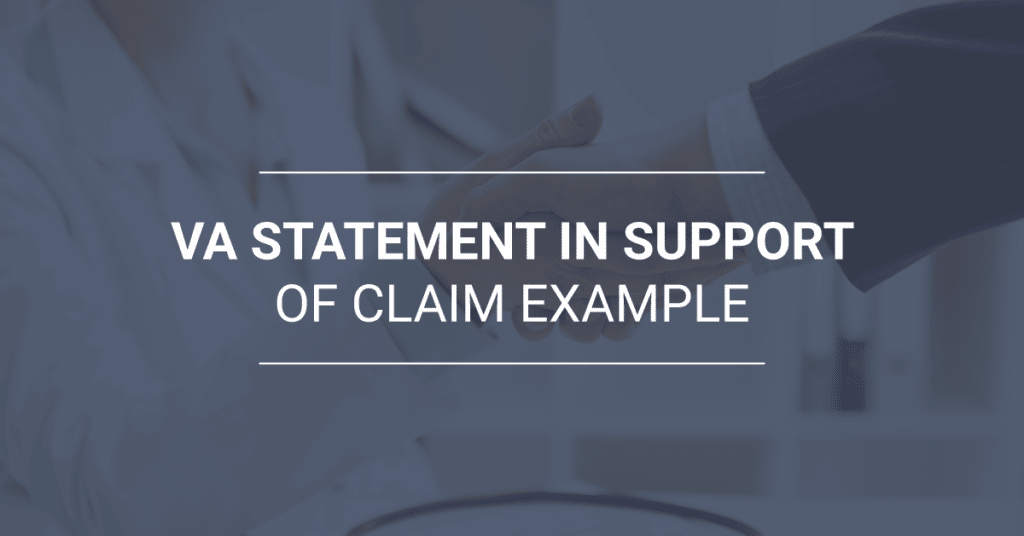
If you served in the United States military, then you may be entitled to certain benefits through the U.S. Department of Veterans Affairs ( VA ). This may include disability benefits for those vets who suffered a service-connected disability. If you qualify for VA disability benefits, then you will receive monetary compensation based on your level of disability.
Many veterans are able to make a successful claim for VA disability benefits based on the strength of their military and medical records alone. For most vets, however, the best way to provide a complete picture of their disability claim is to include a Statement in Support of Claim. By writing a relatively brief narrative, you can get the VA a better idea of your current symptoms, how it is connected to your military service, and how it affects your life.
Although the VA does not allow veterans to be represented by counsel for their initial disability claim application, our law firm is dedicated to helping service members achieve the best possible outcome for their disability claims. Below, we outline our best tips for writing a VA disability statement and offer a disability statement example.
Table of Contents
What Is a VA Statement in Support of Claim?
When you are applying for veteran’s disability benefits, you will need to submit a number of forms and documentation to support the claim. In many cases, a claim for VA benefits will be approved on the basis of your military records, medical records, and other evidence.
There may be situations where the VA needs additional evidence to evaluate your application for disability compensation. That is where VA Form 21-4138 , or Statement in Support of Claim comes into play. Also known as a buddy statement or buddy letter, it is most often written by someone that you served with while in the armed forces.
However, anyone who has firsthand knowledge of your service-connected disability can write a statement in support of claim, including you (the applicant). It is often a good idea to submit a Statement in Support of Claim to the VA so that you can better explain how your disability is related to your military service, and how it affects your life.
Statement in Support of Claim Template
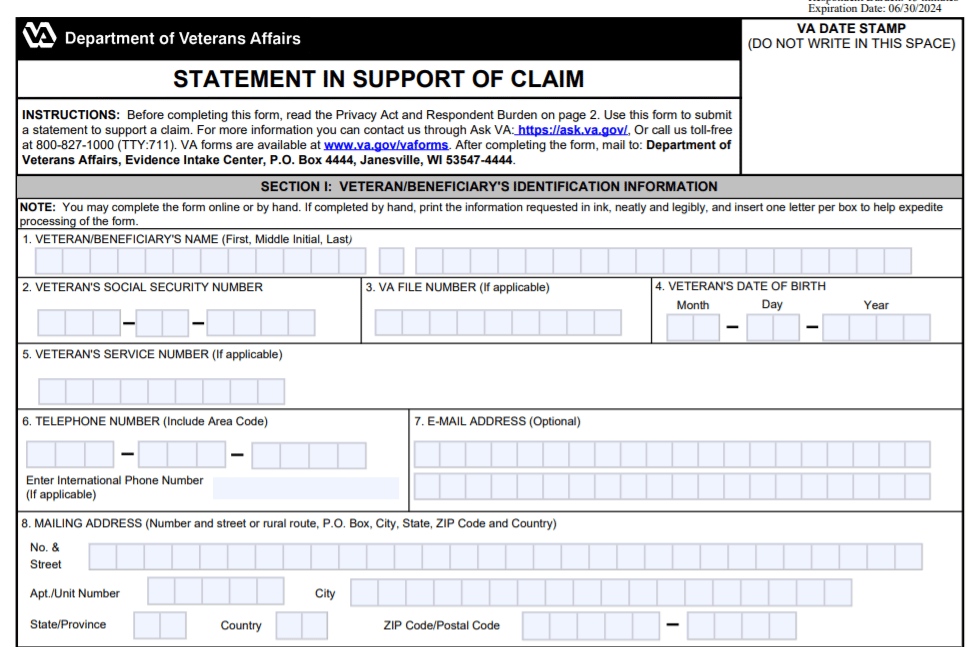
What Do You Need to Fill Out the Claim Form?
When you file Form 21-4138, you will need to provide certain information to the VA. This includes:
- Your social security number
- Your service number
- Your VA file number (printed on any communication from the VA)
- Your date of birth
- Your contact information
All of this information must be filled out at the top of the form so that the VA can properly identify you and ensure that the statement goes to your file.
The main section of the form consists of a space for you or a buddy to write a narrative about your service-connected disability. This is where you (or a buddy) will have an opportunity to explain more about your current symptoms, how your disability is linked to your military service, and the ways in which your disability affects your life.

Recommendations for How to Complete VA Form 21-4138
When evaluating a claim, a VA rater often has to go through mountains of evidence, from service records to claim forms to service treatment records to private treatment records. When you are writing your VA disability statement, try to keep it concise. A VA rater probably won’t want to read more than 3 to 5 paragraphs, so you should aim to limit it to that length.
Your Statement in Support of Claim should contain four sections:
- Name of the current disability that you are claiming (note that you can write a different VA disability statement for each condition);
- When your disability began and why it is connected to your service;
- The current symptoms of your disability, including the frequency, duration, and severity; and
- How the disability negatively impacts your life.
For example, a veteran was diagnosed with post-traumatic stress disorder ( PTSD ) after being discharged from military service. A disability letter example for him is as follows:
- DC 9411, Post Traumatic Stress Disorder (PTSD) Due to Combat Deployment to Afghanistan.
- I was deployed to Afghanistan from April 2009 to March 2011. I helped to carry out counter-insurgency operations across the country. My role there was to ride ahead of conveys, searching for roadside bombs. During my time, I witnessed many of my fellow service members be killed in gruesome ways, and I saw scores of dead bodies. I feared for my life every day of my deployment and had trouble sleeping. During my deployment, my symptoms of anxiety and depression started.
- I was diagnosed with PTSD in 2012 after being discharged from the Army. I still suffer from symptoms of PTSD, including nightmares, flashbacks, severe emotional distress, feelings of hopelessness, lack of interest in activities, difficulty sleeping, self-destructive behavior, memory problems, severe anger, paranoia, and feeling detached from loved ones. I was referred to a VA Mental Health Clinic and undergo therapy and take medication for my PTSD. Despite this treatment, my PTSD symptoms continue.
- My PTSD has negatively affected my work and my personal life significantly. I got divorced from my wife and lost custody of my children. I was fired after I could not concentrate on my job and took too many days off due to my depression. I also was doing a bad job at work because of my memory issues. I have been unable to maintain relationships with friends, coworkers, and family members due to my anger issues. I have been diagnosed with depression and anxiety, and have panic attacks. The medication that I take to help these issues hasn’t relieved my symptoms.
This sample VA Statement in Support of Claim is just one example of what a person may write in support of their claim for disability benefits. Based on your current disability (or disabilities), your letter might look slightly different. For example, if you suffer from sleep apnea that is related to your service, then you would talk more about how this disability is linked to a service event and how it affects your life.
There are also times when you will want to use this form to establish chronicity or other important facts related to your claim (perhaps how you were injured or your impairment began while you were in the military).
If your disability has not already been service-connected, then you will want to provide a nexus between your military service and the disability. This should be done in the second section, in just a sentence or two. For example, if you suffer from a herniated disc in your back, then you may state that your job duties in the military required repetitive lifting and that your symptoms started while you were in the military or shortly after discharge.
Finally, it is important to give at least two specific, concrete examples of how your disability has affected your life. Rather than saying something general, like “my back injury causes a lot of pain,” try to give an example of how your current symptoms affect your daily life. You might say something like “Because of my herniated disc, I can’t sit or stand for an extended period of time, which makes it hard to hold a job or even to take long car rides. I also cannot lift anything above 10 pounds, which has made it difficult to perform basic household tasks like getting groceries and doing laundry.”
Filing for Veterans Disability? We Can Help.
A disability can make it hard to hold down a job or even manage your personal life. If your disability is linked to your military service, then you may be entitled to disability benefits from the VA. A Statement in Support of Claim can be used to bolster your claim for service connection.
At Bross & Frankel, we are proud to advocate for the men and women who have served our country. We represent veterans in all types of matters, including filing a disability claim. To learn more or to schedule a free consultation with a New Jersey veterans’ disability lawyer , give our law firm a call at 856-795-08002 or fill out our online contact form .

Rich Frankel is the managing partner of Bross & Frankel . He is a member of the New Jersey and Pennsylvania bars. He has focused exclusively on disability and social security benefits since 2005.
Mr. Frankel joined what is now Bross & Frankel after having watched his father struggle with disability, fighting a lengthy illness. Mr. Frankel founded the firm’s veteran’s law practice and substantially grew the social security disability practice , focusing Bross & Frankel’s ability to fight for all of the disability benefits available to his clients.
Mr. Frankel additionally fights for clients in court, obtaining frequent victories in Social Security appeals and against insurance companies in Federal court.
- How to Apply for Disability
- How to Appeal an Disability Denial
- Cost of a Disability Attorney
- Trenton Disability Lawyers
Veterans Benefits
- NJ Veterans Benefits Attorneys
- Veteran Disability Appeals
- Philadelphia Veterans Benefits Lawyers
- VA Nexus Letter
- Long Term Disability Lawyers
- How to Apply for Long Term Disability?
- Philadelphia Long Term Disability Attorneys
Resources for Those Over 50
- Qualifying for Disability After 50
- Disability Reviews After Age 50
Important Information
- Can You Work While Applying for Disability?
- What Conditions Qualify You For Disability?
- Difference Between SSI and SSDI
- Can You Collect SSD and LTD?
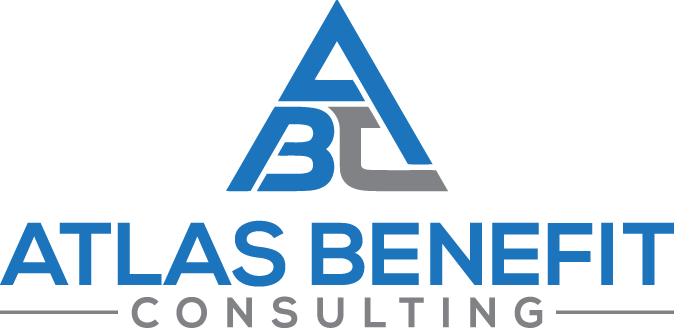
- About Atlas Benefit Consulting (ABC)
- About the Owners
- Privacy Policy
- Frequently Asked Questions – FAQ
- Anna Fendley
- Ashley Hammill
- Paige Wheeler
- Victoria Hardy


Statement in Support of Claim
What is a statement in support of claim.
A statement in support of claim is for information that veterans, family members, friends, colleagues, and/or former service members can submit to the VA to help support a veteran’s claim. A statement in support of claim is helpful when there is firsthand knowledge and personal statements of the event, timing, or current conditions that will corroborate a veteran’s claim or request for increase in disability rating and benefits.
While it does not take the place of medical records or in establishing a medical nexus, a statement in support of claim can be key in providing information that will help prove an initial VA disability claim or a request for increase in rating and benefits. The VA is required to consider favorable and relevant evidence submitted through a statement in support of claim and buddy or lay statements.
Who Should Fill Out a Statement in Support of Claim?
- The veteran can (and should!) submit their own statement that details the in-service event/incident that contributed to their current condition or disability and the effect it is having on their daily life.
- Family members, friends, or coworkers help strengthen the veteran’s claim by providing a statement detailing their account of how the disability or condition is affecting the veteran’s life and/or work.
- Former service members can submit a statement to help back up the veteran’s account of the in-service incident that has caused or contributed to their current state or disability.

For the Veteran
The veteran should fill out VA form 21-4138, a statement in support of claim. It is important that the veteran provide 3-5 paragraphs worth of a personal statement in this form, which will help with general time frame, detailing the in-service event(s), and describing the current effects and limitations the event has caused or had impact on in the veteran’s daily life.
Download the form with the button below OR start the online process here .
A separate statement in support of claim (VA form 21-4138) should be filled out for each disability the veteran is claiming. This is more conclusive and detailed than trying to include all disabilities and details on one form.
For the best possible VA Form 21-4138 submission, keep these suggestions for flow in mind:
- Include the diagnostic code with your condition.
- Give a general and approximate timeframe (don’t be super specific unless you are 100% sure of the exact moment) of when the condition or disability started. If you aren’t sure of the month and year, a season and year is appropriate, such as “summer of 2019”. Help the VA connect the dots by explaining in honest detail why the condition or disability should be service-connected, or why an increase in rating is deserved because of worsening conditions and increased effects of the condition in daily life.
- Here is an example for filing for depression secondary to PTSD: “I’ve suffered from service-connected Post Traumatic Stress Disorder (PTSD) since August of 2019. I have been having panic attacks twice a week for the past seven months, and it’s greatly affecting my ability to work or enjoy being social. My relationships are suffering and I’m unmotivated to be around people. I was also prescribed a daily anti-depressant medication six months ago. I strongly believe my depression is secondary to my PTSD. My medical provider has confirmed this as a common secondary condition to PTSD, and I am including the medical records, along with my prescription records, from these visits.”
- Explain your current disability symptoms in detail. The details you should focus on are how often, how severe, and how long it lasts. It is important to be aware of what rating your symptoms put you in, so you can more accurately describe your symptoms and have knowledge and confidence in what you are eligible for.
- The VA’s 38 CFR Book C, Schedule for Rating Disabilities , can be helpful in determining which rating bracket you are in based on your symptoms. Explain in detail how your disability or condition is affecting you or limiting you in your daily life- with family, friends, work, etc. The clearer and more specific, the better.
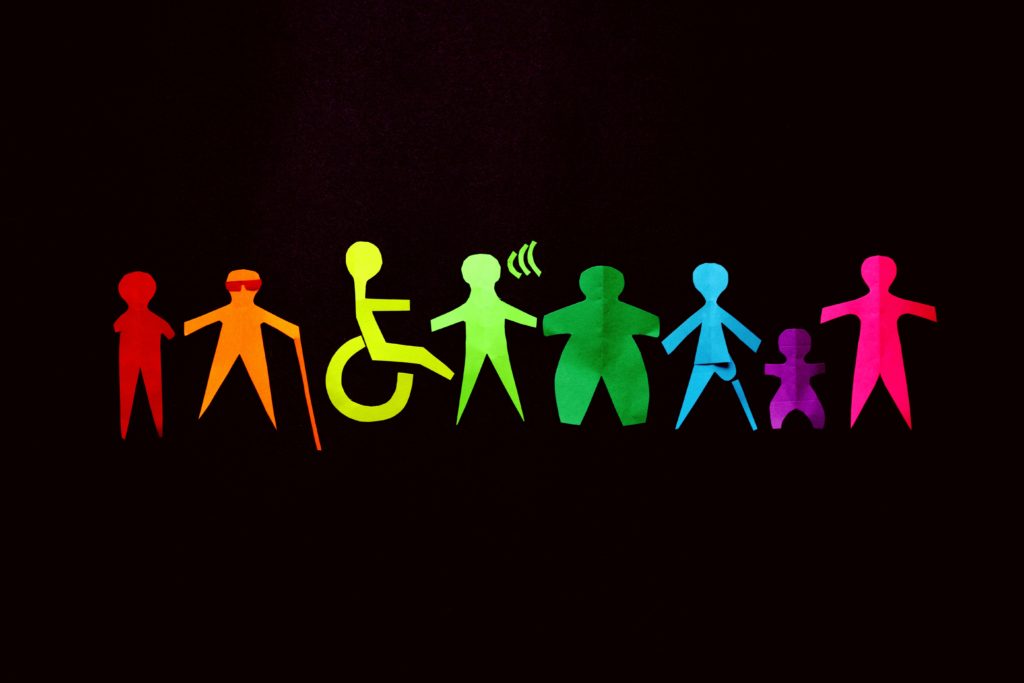
Tips for Laypersons Filling out a Statement in Support of Claim, or Buddy/Lay Statement
Since January of 2021, the VA strongly recommends that buddy or lay statements to be submitted via VA Form 21-10210.
Buddy/Lay Statement VA Form 21-10210
The form has sections requiring the person filling it out to identify the veteran, provide their own information, give their written statement, and certify and sign. If the statement requires more room than is offered on the form, additional papers, called an addendum, can be attached to the statement. *It should always be noted on the original form that an addendum is attached.
Each individual person providing evidence to support a veteran’s claim should fill out a separate VA Form 21-10210. Credibility and competency are crucial for the statement to be able to help support the veteran’s claim.
Some things the layperson (family member, friend, colleague, former service member) should do to increase the likelihood of the form being competent and credible are:
- Offer more general time frames if an exact time is not known. Inconsistent dates will damage the credibility of the statements and claim.
- Be truthful and consistent.
- Provide a personal statement that is 3-5 paragraphs long. Shorter and more concise is better.
Read one of our previous posts: “You Need a Buddy” .
Get the Help You Need
Our team can help you navigate the complexities of the VA rating and benefit process. Many veterans are underrated and not receiving the maximum benefits and compensation that they have earned and deserve. Click the button below to connect now with one of our team members for a free consultation to determine if you are receiving your maximum!
Leave a Reply Cancel reply
You must be logged in to post a comment.
- Terms & Conditions

June 24, 2019
VA Lay Statement Examples (Updated)
Last updated on May 2, 2024

I hope you enjoy reading this blog post.
If you want to learn how to implement these strategies to get the VA benefits you deserve, click here to speak with a VA claim expert for free.
In this post, I provide veterans with a real VA lay statement example.
I also explain how to use lay evidence to service connect your VA disability claim, even if you’ve already filed or been denied.
This information is especially important if your service treatment records lack sufficient medical evidence of any in-service disability or condition.
Side note: This is VERY common, veterans!
Because you often didn’t go to the doctor enough while you served on active duty, and thus, your service treatment records do not contain any evidence of a disability or condition.
I can literally read the VA’s denial letter now: “The veteran’s active duty service treatment records do not contain any medical evidence or subject complaints of the disability or condition.”
Here’s the deal, veterans: You can prove your VA disability claim and overturn previous denials of service connection using something called “lay evidence.”
Let’s take a look.
Table of Contents

You DESERVE a HIGHER VA rating. WE CAN HELP.
Take advantage of a FREE VA Claim Discovery Call with an experienced Team Member. Learn what you’ve been missing so you can FINALLY get the disability rating and compensation you’ve earned for your service.
What is Lay Evidence?
Lay evidence, such as a VA lay statement, simply means “after-the-fact evidence,” and it must be competent and credible.
“Competent lay evidence” means any evidence not requiring that the proponent have specialized education, training, or experience.
Lay evidence, like a buddy lay statement or a spousal statement, is competent and credible if it is provided by a person who has knowledge of facts or circumstances and conveys matters that can be observed and described by a layperson.
Alright, enough legal jargon.
VA Lay Statement Examples
Personal statements, buddy letters, and spousal letters can all be considered VA lay statement examples.
1. A personal statement you write on the VA Form 21-4138 documenting how you think your current non-combat Post Traumatic Stress Disorder is due to an in-service sexual assault and stressor event that occurred 20 years ago IS lay evidence.
2. A Buddy Letter written by someone you served with who can shed some light on how your shoulder separation occurred on active duty IS lay evidence.
3. A sleep apnea lay statement example could be a spousal letter for sleep apnea , which documents what your spouse has witnessed over the years and the approximate dates your spouse noticed your sleep apnea symptoms began in-service IS lay evidence.
4. A current co-worker’s statement in support of a claim describing the severity of your current PTSD symptoms IS lay evidence.
How to Prove VA Service Connection
According to the law, service connection may be granted for a disability resulting from disease or injury incurred in or aggravated by service. See 38 U.S.C.A. § 1110; 38 C.F.R. § 3.303(a).
Service connection may also be granted for any disease diagnosed after discharge when all of the evidence, including that pertinent to service, establishes that the disease was incurred in service. See 38 C.F.R. § 3.303(d).
Service connection requires competent evidence showing: (1) the existence of a present disability; (2) in-service incurrence or aggravation of a disease or injury; and (3) a causal relationship between the present disability and the disease or injury incurred or aggravated during service.
Click to Read Shedden v. Principi, 381 F.3d 1163, 1167 (Fed. Cir. 2004).
Depending on the evidence and contentions of record in a particular case, lay evidence can be competent and sufficient to establish a diagnosis and medical etiology of a condition.
Click to Read Davidson v. Shinseki, 581 F.3d 1313 (Fed. Cir. 2009).
Click to Read Jandreau v. Nicholson, 492 F.3d 1372, 1377 (Fed. Cir. 2007).
Alternatively, service connection may be established under 38 C.F.R. § 3.303(b) by (a) evidence of (i) the existence of a chronic disease in service or during an applicable presumption period under 38 C.F.R. § 3.307 and (ii) present manifestations of the same chronic disease, or (b) when a chronic disease is not present during service, evidence of continuity of symptomatology.
When there is an approximate balance of positive and negative evidence regarding any issue material to the determination of a matter, the Secretary shall give the benefit of the doubt to the claimant. See 38 U.S.C.A. § 5107; 38 C.F.R. § 3.102.
Click to Read Gilbert v. Derwinski, 1 Vet. App. 49, 53 (1990).
Lay persons are competent to provide evidence regarding things they have personally observed, including symptoms that are capable of lay observation and when those symptoms occurred. See 38 C.F.R. § 3.159(a)(2);
Layno v. Brown, 6 Vet. App. 471 (1994).
Can I Use Lay Evidence to Win My VA Claim?
According to M21-1, lay evidence, or a VA lay statement example, is acceptable for the purpose of establishing service incurrence or aggravation in the absence of Service Treatment Records (STRs) for a combat Veteran or FPOW if the evidence:
- Is satisfactory
- Is consistent with the circumstances, conditions, or hardships of combat or FPOW internment, and
- Can prevail in spite of the absence of official records showing incurrence or aggravation of the disease or injury during service.
Important : Medical evidence of a link to a current condition is still needed to establish SC.
Awe, there’s the WHAMMY!
Veterans, this is why I founded VA Claims Insider.
Even though lay evidence can help you prove service connection, you still need competent medical evidence from a credentialed medical professional to help establish service connection.
You need to obtain a Medical Nexus Letter to help you win and service connect your VA disability claim.
*A non-combat veteran’s lay statements may be acceptable for establishing service incurrence or aggravation but must be weighed against other evidence in the claims folder, including the absence of military records documenting or supporting the statements.
References : For more information on
- Considering evidence for combat-related disabilities, see M21-1, Part IV, Subpart ii, 2.B.3.d
- Considering lay evidence, see 38 U.S.C. 1154(a)
- A non-combat Veteran’s statements, Click to Read Bardwell v. Shinseki , (2010), and
- Evaluating service treatment records, see M21-1, Part III, Subpart iv, 5.A.3.h .
Lay evidence is generally afforded probative value if it is provided by a person who has knowledge of facts or circumstances and conveys matters that can be observed and described by a layperson.
The value accorded to other types of lay evidence depends on such factors as
- The accuracy or clarity of the individual’s memory
- Direct personal knowledge or experience
- The recency of the event, and
- The competence of the reporting person.
* A medically untrained individual is not usually competent to offer a medical opinion regarding the etiology of disorders, and such an opinion is generally assigned little probative weight.
References : For more information on
- Using lay evidence to support a claim, Click to Read Espiritu v. Derwinski , (1992), and
- Definition of lay evidence, see 38 CFR 3.159(a)(2) .
Can I Write A Personal Statement in Support of My VA Claim?
A veterans’ own statement, covering in sufficient detail a condition that is within his/her ability to describe, such as his/her own symptoms, may, to that extent, constitute credible and competent lay evidence.
Rationale : While such statements have self-serving aspects, the claimant is often the most qualified source to describe the circumstances of the disabling effects of the disease or injury.
Okay, what does all this mean for your VA claim?
It means that the VA MUST consider all lay and medical evidence of record in a case with respect to benefits.
Lay evidence is one type of evidence that must be considered, and that competent lay evidence can be sufficient in and of itself.
Want to see a real VA lay statement example? Click HERE.
The problem, though, is that RVSRs at the VA don’t interpret this properly, and frankly, neither do the courts.
How Do I Obtain a DBQ and a Medical Nexus Opinion?
This is why it’s so important for veterans to obtain DBQs and Medical Nexus Letters.
A credible Medical Nexus Opinion from a private provider IN ADDITION to any lay evidence provided in support of your VA claim.
A Disability Benefits Questionnaire (DBQ) can help you prove your medical diagnosis and your current symptoms of the disability or condition.
A Medical Nexus Letter from a private provider can help you prove the “Nexus,” which is that logical link to an in-service injury or event that led to your current disability or condition.
If you need some help to win, service connect, and get your VA claim rated at the appropriate level under the law, join VA Claims Insider Elite now.

About VA Claims Insider
- VA Claims Insider is a highly rated, veteran-owned and operated business.
- 25,000+ disabled veterans served in our membership programs since 2016.
- Employs 200+ teammates; comprised of 44 veterans as well as military spouses.
- 4.7/5.0 average rating out of 5,000+ total reviews; over 4,000 5-star reviews.
About the Author

Brian Reese
Brian Reese is one of the top VA disability benefits experts in the world and bestselling author of You Deserve It: The Definitive Guide to Getting the Veteran Benefits You’ve Earned (Second Edition) .
Brian’s frustration with the VA claim process led him to create VA Claims Insider , which provides disabled veterans with tips, strategies, and lessons learned to win their VA disability compensation claim, faster, even if they’ve already filed, been denied, gave up, or don’t know where to start.
As the founder of VA Claims Insider and CEO of Military Disability Made Easy , he has helped serve more than 10 million military members and veterans since 2013 through free online educational resources.
He is a former active duty Air Force officer with extensive experience leading hundreds of individuals and multi-functional teams in challenging international environments, including a combat tour to Afghanistan in 2011 supporting Operation ENDURING FREEDOM.
Brian is a Distinguished Graduate of Management from the United States Air Force Academy, Colorado Springs, CO, and he holds an MBA from Oklahoma State University’s Spears School of Business, Stillwater, OK, where he was a National Honor Scholar (Top 1% of Graduate School class).
Related Articles

Vietnam Veterans: Is Your Medical Condition on the Agent Orange Presumptive List?
January 14, 2022

Military Sexual Trauma (MST): The Ultimate Guide
September 24, 2021
Featured Resources

Easy VA Claims to Win!

How to File a Claim on VA.gov (step-by-step)!

How to Get a 100 Percent VA Rating (if deserved)!
Elite Membership
Dear Veteran, Here’s the brutal truth about VA disability claims:
According to our data, 8/10 ( 80% ) of veterans reading this message right now are underrated by the VA…
This means you do NOT currently have the VA disability rating and compensation YOU deserve, and you could be missing out on thousands of dollars of tax-free compensation and benefits each month.
As a fellow disabled Veteran this is shameful and I’m on a mission to change it.
Brian Reese here, Air Force service-disabled Veteran and Founder @ VA Claims Insider.
Since 2016, VA Claims Insider has helped thousands of Veterans just like you get the VA rating and compensation they deserve in less time.
If accepted into our ELITE membership program, you’ll get free up-front access and permission to use $13,119 worth of proprietary VA claim resources, including access to our network of independent medical professionals for medical examinations, disability evaluations, and credible Medical Nexus Letters, which could help you get a HIGHER VA rating in LESS time.
It’s FREE to get started, so click “Go Elite Now” below to complete our 3-step intake process.
- Complete Basic Information
- Sign Members Agreement
- Join the Mastermind Group
If you’re stuck, frustrated, underrated, and currently rated between 0%-90%, VA Claims Insider Elite is for you!
Click “Go Elite Now” below to get started today and a member of our team will be in touch within minutes.
Go Elite Now!
Why Choose VA Claims Insider
You’ve exhausted your free resources.
You're not alone. Thousands of other Veterans in our Community are here for you.
Veteran Community
You’re ready to get the rating you deserve
We know the pain of feeling stuck, frustrated, and alone, and we want to make this process as easy and painless as possible for you.
Explore Elite Membership
We win ONLY when YOU win
Hear from fellow Veterans just like you, with many of our Veteran Ambassadors having gone through our programs.
Schedule a Call

Fellow Veterans:
Secret VA Claim Tips Revealed!
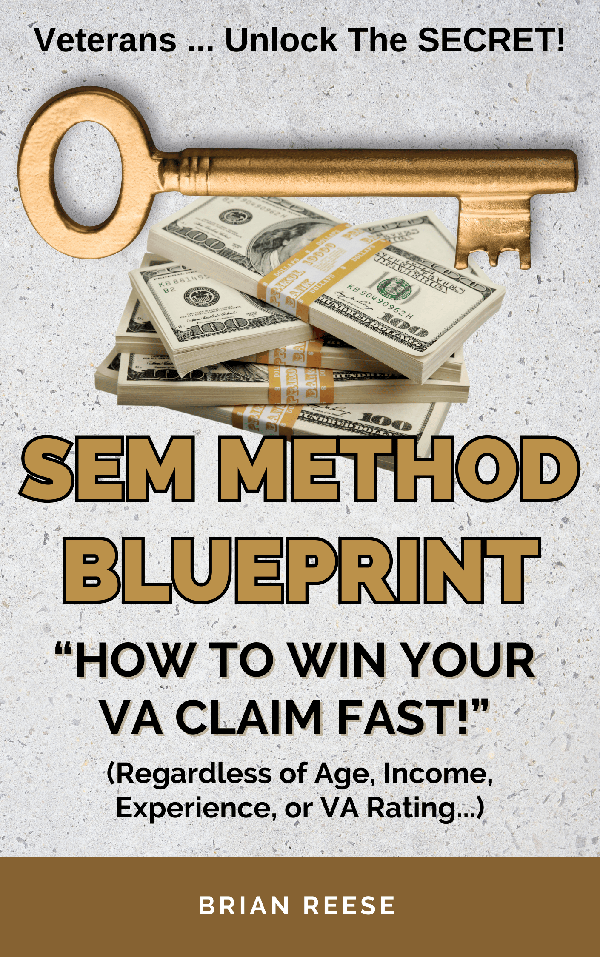
Enter your email address below to download the SEM Method Blueprint!
Your Email Address Is Protected - We Respect Your Privacy Fellow Veterans, and Will Never Spam You.

Frustrated with your VA Rating? It’s time to RUCK UP!
Secure Your VA Benefits: How to Write a Powerful Statement in Support of a Claim
- norman_strohdach
- August 7, 2023
- No Comments
- Uncategorized

When submitting a claim for benefits to the Department of Veterans Affairs (VA), providing a strong and effective statement in support of your claim can be crucial to receiving the compensation you deserve. A VA statement in support of a claim is a personal statement that outlines the details of your medical condition, the impact it has had on your life, and why you believe you are entitled to benefits.
In this article, we will provide an example of a powerful VA statement in support of the claim and discuss some tips on how to write an effective statement that can help you win your case.
Curious about VA Form 21-4138 ? Click here to find out what a Statement in Support of a Claim is and why it’s crucial for the disability compensation claim process for veterans.
WHAT IS A VA STATEMENT IN SUPPORT OF A CLAIM?
A VA Statement in Support of a Claim is a personal statement that a veteran provides to the Department of Veterans Affairs (VA) when filing a claim for disability compensation. The statement serves to provide details about the veteran’s medical condition, how it affects their daily life, and why they believe they are entitled to VA benefits. It is a critical component of a veteran’s claim and can help the VA understand the veteran’s unique circumstances and make an informed decision about their eligibility for compensation. The statement can be used to provide additional information that may not be included in the medical records or other documents submitted as part of the claim. Writing a powerful VA Statement in Support of a Claim is essential to ensure that the VA has a comprehensive understanding of the veteran’s condition and its impact on their life.
FOUR CRITICAL SECTIONS OF A SAMPLE STATEMENT SUPPORTING A CLAIM
When submitting a claim for disability compensation to the Department of Veterans Affairs (VA), a Statement in Support of a Claim can be a crucial component in the process. A powerful statement can help the VA understand the full extent of a veteran’s medical condition and how it affects their daily life.
For the best chance of success with your VA disability claim, make sure your Statement in Support of a Claim covers these four critical sections, tailored to your specific situation:
#1. Clearly state the name of the disability you are claiming in the first section of VA Form 21-4138.
#2. Explain when your disability began and why it should be service-connected or why your VA rating should be increased for conditions that are already service-connected.
#3. List the current symptoms of your disability in terms of frequency, severity, and duration over time.
#4. Explain how your disability negatively impacts your work, life, and social functioning with specific examples.
While the official VA Form 21-4138 is still the preferred document to use when writing your personal statement, you can also submit a “ Buddy Statement ” from someone with firsthand knowledge of the facts and circumstances to support your VA disability claims. Don’t leave your benefits to chance, ensure your Statement in Support of a Claim is comprehensive and personalized.
VA Statement in Support of Claim VA Form 21-4138

EXAMPLE OF A POWERFUL VA STATEMENT IN SUPPORT OF CLAIM
Here is an example of a VA statement in support of claim that highlights the essential elements of a compelling statement:

TIPS FOR WRITING A POWERFUL VA STATEMENT IN SUPPORT OF CLAIM
- Be clear and concise: Your statement should clearly and concisely describe your medical condition, how it affects your daily life, and why you believe you are entitled to benefits.
- Provide specific details: Include specific details about your injury or illness, such as when and where it occurred, any medical treatment you have received, and any ongoing symptoms.
- Use simple language: Avoid technical jargon and use simple language that is easy to understand.
- Explain the impact on your life: Describe how your injury or illness has affected your ability to function in daily life, such as your ability to work, perform household tasks, or engage in social activities.
- Be honest and truthful: It is important to be honest and truthful when describing your condition and its impact on your life.
- Use examples: Provide specific examples of how your condition has affected your life, such as missed work or social events, to help the VA understand the impact.
- Seek assistance: If you are struggling to write your statement, consider seeking assistance from a Veterans Service Officer or other qualified professional.

A powerful VA statement in support of claim can be a crucial element in winning your case for disability benefits. By following these tips and including the essential elements discussed in the example, you can increase your chances of receiving the compensation you deserve for your service-connected injury or illness.
IS IT NECESSARY TO DRAFT A STATEMENT IN SUPPORT OF A CLAIM FOR EVERY DISABILITY CONDITION IN A VA DISABILITY CLAIM?
Absolutely! It’s highly recommended that you craft a comprehensive personal statement for each disability condition you are claiming. Here’s an example scenario to illustrate this point: Suppose you are planning to file a single VA disability claim for three different conditions – an increase in your service-connected PTSD, an increase in your service-connected GERD, and a new secondary condition for migraines resulting from Tinnitus.
In this case, it is crucial that you write three separate VA Statements in Support of a Claim, one for each disability condition. For instance:
Statement # 1 :
Statement in Support of a Claim to Increase Service-Connected PTSD VA Rating – This statement should elaborate on how your PTSD is limiting or affecting your work, life, and social functioning, highlighting your current mental health symptoms, and the reasons why you should be entitled to a higher rating.
Statement #2 :
Statement in Support of a Claim to Increase Service-Connected GERD – This statement should explain how your GERD is limiting or affecting your work, life, and social functioning, focusing on your current GERD and acid reflux symptoms, and the reasons why you should receive a higher rating.
Statement #3 :
Statement in Support of a Claim for Migraines Secondary to Tinnitus – This statement should explain why you believe that your migraines were caused or worsened by your Tinnitus, elaborating on how your migraines are limiting or affecting your work, life, and social functioning, and highlighting your current migraine symptoms.

How to Write a Compelling VA Statement in Support of a PTSD Claim
If you’re a veteran who’s experiencing PTSD symptoms and planning to file a claim with the VA, you’ll need to provide a Statement in Support of a Claim. Writing a strong VA Statement is critical to receiving a fair rating and the benefits you deserve. Follow this process to help you write a compelling VA Statement in support of your PTSD claim.
#1: Name Your Disability
In the first section of VA Form 21-4138, list the name of your VA disability condition. Use the actual medical diagnosis from your medical records, including the Diagnostic Code (DC) of the condition you’re claiming from CFR Title 38, Part 4, Schedule for Rating Disabilities. 38 CFR Book C, Schedule for Rating Disabilities For example, if you’re a first-time filer of PTSD due to combat deployment to Iraq, name the disability as “DC 9411, Post Traumatic Stress Disorder (PTSD) Due to Combat Deployment to Iraq.”
#2: Explain Your Disability and Why It Should Be Service Connected
In the second section, explain the approximate timeframe your disability began, along with why it should be service-connected (or why your VA rating should be increased for conditions already service-connected). Be clear and concise, and list the page numbers in your records where the VA Rater can find the condition quickly.
#3: Describe Your Current Symptoms
In the third section, list your current symptoms of PTSD, including frequency, severity, and duration over time. Be specific and provide examples to help the VA Rater understand the impact on your life. This information is critical to determining your disability rating.
#4: Explain How Your Disability Affects Your Life
In the final section, explain how your PTSD negatively impacts your work, life, and social functioning. Provide at least two specific examples of how your disability limits or affects you in negative ways. This information will help the VA Rater understand the full extent of your disability.
By following this process, you can write a powerful VA Statement in support of your PTSD claim. Make sure to include all relevant information, medical records, and supporting evidence to increase your chances of receiving a fair rating and the benefits you deserve.

Example of a VA Statement in Support of Claim for Migraine Headaches
If you’re a veteran who suffers from migraines and wants to file a claim with the VA, it’s important to provide a Statement in Support of Claim. This document helps to explain the details of your condition and how it affects your life. Here’s an example of a real VA Statement in Support of Claim for Migraine Headaches.
In this particular case, the veteran had already been service connected at 30% for Migraines, but did not feel an increase to the higher VA rating level of 50% was warranted. The Statement in Support of Claim sample includes the following sections:
𝟏. DC 8100, Migraine Headaches
𝟐. Description of the veteran’s headaches remains largely the same with occasional increases and decreases in severity since 2012, when the headaches were first service-connected.
𝟑. Details on the frequency, duration, and symptoms experienced during a migraine episode, as well as the over-the-counter medications and coping strategies used to manage the pain.
𝟒. Information on how the migraines impact the veteran’s work, including taking frequent naps and breaks, practicing mindfulness, and working from home since 2014 to control their surroundings.
Providing a detailed and honest Statement in Support of Claim can greatly increase your chances of receiving the appropriate VA disability rating for your migraines.
Writing a Successful VA Statement in Support of Claim
Writing a Winning VA Statement in Support of Claim can greatly improve your chances of receiving the benefits you deserve. To start, make sure to provide as much detail as possible about your condition and how it affects your daily life. Use specific examples and provide documentation if available. Be sure to also include any relevant medical records or statements from your healthcare providers.
It’s also important to use language that is clear and easy to understand, avoiding technical jargon or acronyms that might confuse the reader. Be concise and to the point, while still providing enough information to support your claim.
Lastly, remember to include any information about how your condition has affected your ability to work, as well as any other aspects of your life. This can include information about changes in your relationships, hobbies, or other activities.
Overall, a successful VA Statement in Support of Claim requires thorough documentation and clear communication of your condition and its impact on your life. With the right preparation and attention to detail, you can increase your chances of receiving the benefits you deserve.
Recent Posts
- Understanding the 5 10 20 Year Rule for VA Disability: A Comprehensive Guide
- The Ultimate Guide to the 7 Most Common VA Forms for Veterans
- How to Obtain a VA Disability Rating for Panic Attacks
- Divorce and VA Disability: Determining Allocation of Benefits
- Do Reservists Qualify for VA Disability Benefits? (2024)

Frustrated With Your VA Rating? It’s Time To RUCK UP!
Schedule your FREE no obligation “Discovery Call” with our Senior Coaching Officer to find out what your potential increase to your VA Disability rating could be.
Frustrated With Your VA Rating? It's Time To RUCK UP!
Schedule your FREE no obligation “Discovery Call” with our Senior Coaching Officer to find out what your potential increase to your VA Disability rating could be.
Subscribe to our newsletter and stay updated

DISCLAIMER: “THE FINE PRINT”
We are NOT an Accredited Agent, VSO, Attorney, or any other entity recognized by the Department of Veteran Affairs (VA) and we are not affiliated with the VA in any way. This is for informational/educational purposes only and should NOT be substituted for the medical advise from a doctor or health care provider or in leu of legal advice of a VA accredited attorney. VDC Bootcamp, LLC does not GUARANTEE the same results, but we are excited what this can do for you. Individual results may vary!
- 8 W Market St, Wilkes-Barre, PA 18701, US
- +1(267) 219-5012
- [email protected]
Copyright © 2023 Veteran Disability Claims Bootcamp – All Rights Reserved. Developed by Sage Web Solution
Announcement
VDC Bootcamp will be moving to a non-profit organization. More exciting news coming soon!

IMAGES
VIDEO
COMMENTS
Download VA Form 21-4138 (PDF) Related forms and instructions. VA Form 21-10210. Form name: Lay/Witness Statement Use VA Form 21-10210 to submit a formal statement to support your VA claim—or the claim of another Veteran or eligible family member. Download VA Form 21-10210 (PDF) VA Form 20-10206
A VA Statement in Support of a Claim is a 3-5 paragraph written narrative that details the facts and circumstances of an individual VA disability condition. Personal statements can be very powerful in filling in any gaps between your military service and present day, including things like service treatment records, doctor visits for treatment ...
Learn how to write a VA personal statement to show the link between your military service and disability. Find out what to include, what to avoid, and see a sample statement and a lay witness statement.
The collective power of these statements adds depth, context, and humanity to your claim, ensuring that decision-makers have a comprehensive understanding of your unique circumstances. A VA Statement in Support of a Claim is a 3-5 paragraph written narrative that details the facts and circumstances of an individual VA disability condition.
The Veteran —Veterans can write a Statement in Support of Claim to tell their own story. Statements provide a space for veterans to describe how their disability impacts their ability to work, perform the functions of daily living, or interact socially with family and friends. Here, veterans may also provide a first-hand account of the ...
Statements in Support of a Claim are an invaluable piece of the VA disability claims process. They allow a veteran to share their experiences, detail the impacts of their disability on their life and provide a personal touch that other evidence and paperwork just won't have. Spend quality time ensuring you have the best statement you can give ...
A VA Statement in Support of a Claim is a 3-5 paragraph written narrative that details the facts and circumstances of an individual VA disability condition. Personal statements can be very powerful in filling in any gaps between your military service and the present day, including things like service treatment records, doctor visits for ...
We represent veterans in all types of matters, including filing a disability claim. To learn more or to schedule a free consultation with a New Jersey veterans' disability lawyer, give our law firm a call at 856-795-08002 or fill out our online contact form. Rich Frankel. Rich Frankel is the managing partner of Bross & Frankel.
One that I have used for my own personal statements is "I certify that the information contained in support of my claim is 100% true to the best of my knowledge and belief. Please contact me if more information is needed." The personal statement can be entered on the VA Form 21-4138, Statement in Support of Claim or can stay on just a ...
Learn How To Write A Personal Statement For Your #VA Disability ClaimWe are retired #VA raters and we educate veterans on the VA claims process.📚You can now...
VA Form 21-4138 . A separate statement in support of claim (VA form 21-4138) should be filled out for each disability the veteran is claiming. This is more conclusive and detailed than trying to include all disabilities and details on one form. For the best possible VA Form 21-4138 submission, keep these suggestions for flow in mind:
Personal statements, buddy letters, and spousal letters can all be considered VA lay statement examples. 1. A personal statement you write on the VA Form 21-4138 documenting how you think your current non-combat Post Traumatic Stress Disorder is due to an in-service sexual assault and stressor event that occurred 20 years ago IS lay evidence. 2.
PTSD based on a personal assault A Statement in Support of Claim for Service Connection for Post-Traumatic Stress Disorder Secondary to Personal Assault (VA Form 21-0781a) or you can fill out VA Form 21-0781a when you file a disability claim online. Claiming Aid and Attendance because you are in a nursing home
A VA Statement in Support of a Claim is a personal statement that a veteran provides to the Department of Veterans Affairs (VA) when filing a claim for disability compensation. The statement serves to provide details about the veteran's medical condition, how it affects their daily life, and why they believe they are entitled to VA benefits.
Personal Statements/Statements in Support of Claim can be very useful pieces of evidence that can help put your claim over the edge and help you get service connection/increases. ... Hello. I am new to the cite and I need help completing my VA Disability Claims Statement.
The VA disability lawyers at Woods and Woods have helped thousands of veterans. Contact us today to discuss your VA disability appeal or your first application. The call is free and we won't charge you a single fee unless we win your case. Talk to Us About Your Claim: (812) 426-7200. Get a Free Consultation Today!
Talk to the Veterans Crisis Line now. Home. Supporting forms for VA claims. Submit a lay witness statement to support a VA claim. Please wait while we load the application for you.